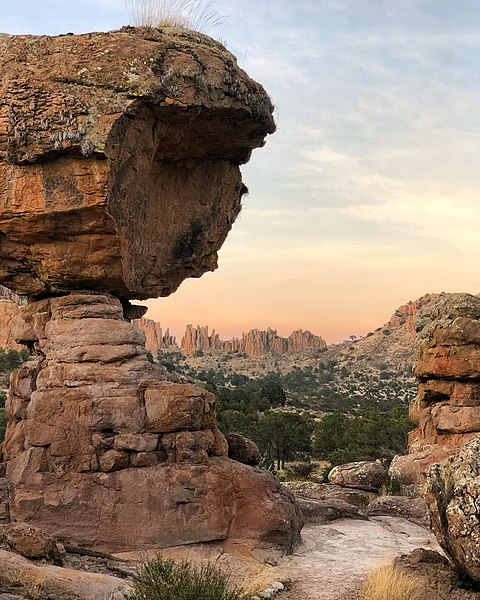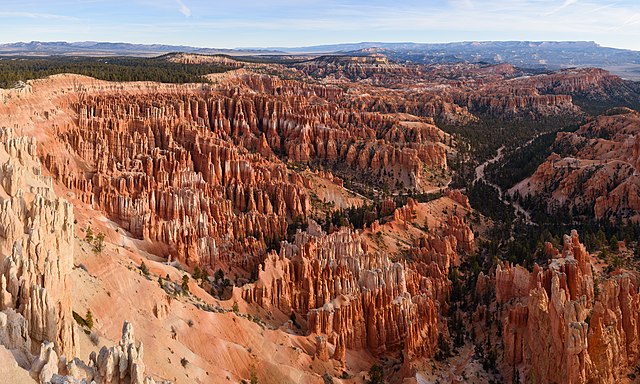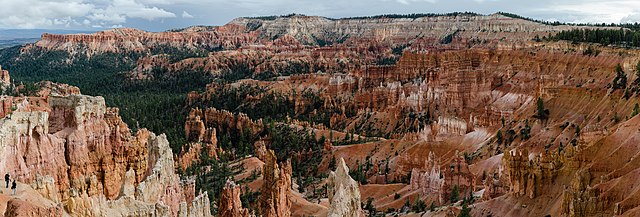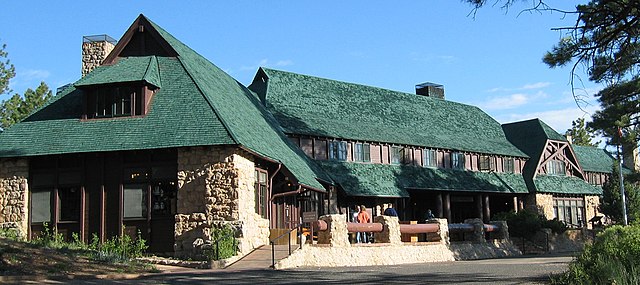A hoodoo is a tall, thin spire of rock formed by erosion. Hoodoos typically consist of relatively soft rock topped by harder, less easily eroded stone that protects each column from the elements. They generally form within sedimentary rock and volcanic rock formations.
Hoodoos in Bryce Canyon National Park, Utah
Hoodoos in Sierra de Organos National Park, Mexico
Goblin Valley State Park, Utah
Tent rocks (peribacası) near Çavuşin, Cappadocia, Turkey
Bryce Canyon National Park
Bryce Canyon National Park is an American national park located in southwestern Utah. The major feature of the park is Bryce Canyon, which despite its name, is not a canyon, but a collection of giant natural amphitheaters along the eastern side of the Paunsaugunt Plateau. Bryce is distinctive due to geological structures called hoodoos, formed by frost weathering and stream erosion of the river and lake bed sedimentary rock. The red, orange, and white colors of the rocks provide spectacular views for park visitors. Bryce Canyon National Park is much smaller and sits at a much higher elevation than nearby Zion National Park. The rim at Bryce varies from 8,000 to 9,000 feet.
Bryce Canyon National Park
Bryce Amphitheater from Sunrise Point
Ebenezer Bryce and his family lived in this cabin below Bryce Amphitheater (c. 1881).
Bryce Canyon Lodge was built between 1924 and 1925 from local materials.








